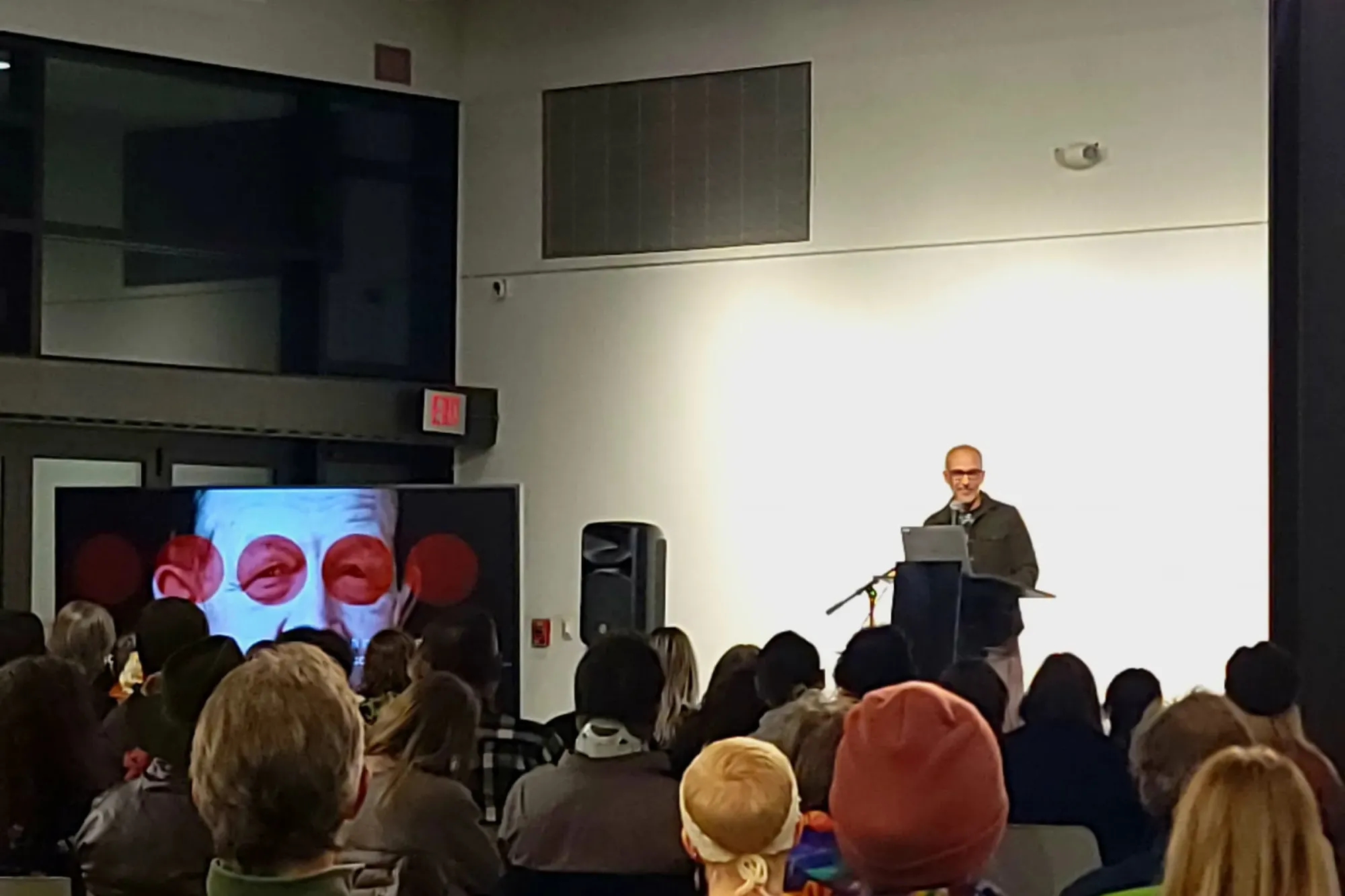Michael Mason: The Secret Psychedelic History of Tulsa
101 Archer
Tulsa
Dec.14, 2023
Any free seminar about psychedelic drugs probably attracts an eclectic crowd. At least a hundred people went to a recent one at the Oklahoma Center for the Humanities in downtown Tulsa. Some were young and stylish, others were old and still stylish; some looked like hippies, and others looked like academics. Oral Roberts University students mingled with witches in the gallery before it started.
We were all there to learn the secrets that journalist Michael Mason promised to reveal about local connections to America’s psychedelic movement. Most of us had taken an Oklahoma History class at some point. But we didn’t know that, as his research for a new book suggests, peyote was as important to our state’s history as the land run, or that spiritual hymns were incorporated into the peyote church via churches in the Greenwood District.
Not much has been published on the topics Mason is investigating. His research is largely based on hundreds of hours of interviews over the last 10 years, talking to people like Nick Sand (creator of “Orange Sunshine” LSD in the 1960s) and top psychedelic researchers at Johns Hopkins and Imperial College London. For this evening’s talk, Mason brought a PowerPoint full of details on what he has learned about the influence of psychedelics on Oklahoma’s history so far.
He explained how the University of Tulsa stood at the epicenter of hypnosis studies in the late 1930s, and that Peace of Mind bookstore, on Cherry Street, was deeply connected to Terence McKenna, a well-known advocate of psychedelic substances, in the 1970s. In the 1980s, the man Mason calls “the Mozart of underground psychedelic chemistry” — Gordon Todd Skinner — started his experiments as a student at Cascia Hall, in midtown. He used classmates as guinea pigs, dosing them with his homemade hallucinogens and observing the varying mind-bending effects.
Skinner turned out to be the star of the evening. We listened to recordings (the audio was somewhat fuzzy) of him describing his peyote experiences and standoffs with FBI agents. After high school, he rented space in the City of Faith, Oral Roberts’ iconic gold building on South Riverside, as a location for psychedelic experiments in the 1990s. He went on to be involved in an extensive LSD manufacturing operation, headquartered out of a decommissioned missile silo in Kansas. A 2003 incident at the downtown DoubleTree hotel (which This Land detailed in this article) would leave a dark shadow on Skinner’s legacy.
During a Q&A with this particularly curious and engaged audience, there were a couple of psychedelic-related legal questions Mason couldn’t answer. But when someone asked, “If you could pick one psychedelic to save humanity, what would it be?” he replied, “mushrooms” — they’re more accessible and less demanding than peyote.
I think that Mason hopes people walk away from this presentation able to talk about psychedelics more openly, maturely — less secretly, fearfully. “The more freely we can discuss psychedelics, the more inclined society will be to research them and take them seriously and to create legislation that promotes their positive aspects,” he told me after the event.
Any boundary can be pushed, and probably should be if it expands the mind and the heart. I know I came to this talk, in part, because I want to understand my home, especially its more bizarre sides, and what it means to be in Tulsa at this time. This place has always felt upside down and inside out to me; Mason’s research shows that we’re already down the rabbit hole, so to speak.
Next at Oklahoma Center for the Humanities: OK, Play! opening Jan. 5, 2024






